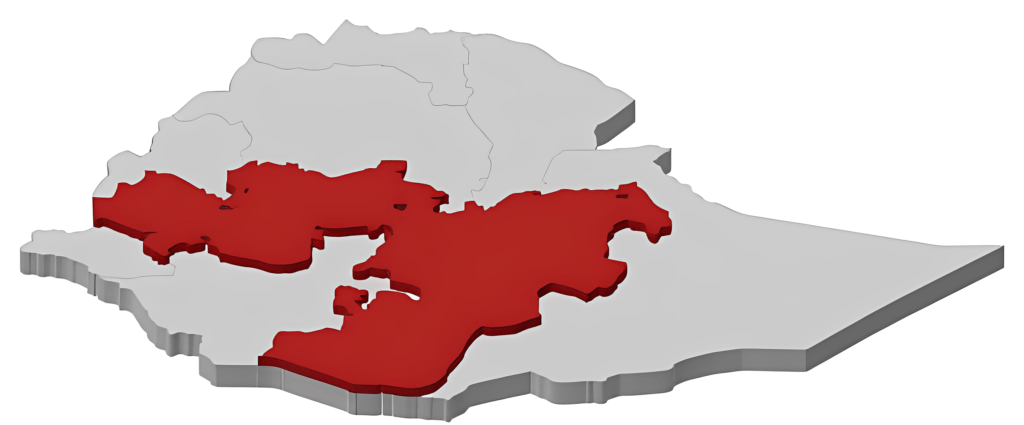Oromia Land Economy: A Bounty of Agriculture, Minerals, and Natural Wonders
Table of Contents
Oromia Land

The country of the Oromo is called Biyya-Oromo (Oromo country) or Oromia Land (Oromiya or Oromiyaa). Oromia is a name given by the Oromo Liberation Front to Oromoland, now part of the Ethiopian Empire. Krapf (1860) proposed the term Ormania to designate the nationality or the country of the Oromo people. This, most probably, originated from his reference to the people as Orma or Oroma.
Oromia Land was one of the free nations in the Horn of Africa until its colonization and occupation by Abyssinia at the end of the nineteenth century. It is approximately located between 2 degree and 12 degree N and between 34 degree and 44 degree E. It is bordered in the east by Somali and Afar lands and Djibouti, in the west by the Sudan, in the south by Somalia, Kenya and others and in the north by Amhara and Tigre land or Abyssinia proper.
The land area is about 600,000 square kilometers. Out of the 50 or so African countries, it is exceeded in size by only 17 countries. It is larger than France, and if Cuba, Bulgaria and Britain were put together, they would be approximately equal to Oromia Land in size.
Fertile Fields to Mineral Riches
Oromia Land Economy, potentially, stands as one of Africa’s most opulent nations, boasting a vibrant tapestry of agricultural prowess. This realm is steeped in the roots of subsistence farming, a practice embraced by over 90% of its populace despite its reliance on antiquated methods, painting a vivid landscape of agricultural sustenance. Within this realm thrives a rich tapestry of livestock and crop cultivation, a testament to the ingenuity of its inhabitants.
Amenable to a bountiful climate and fertile soils, Oromia Land cultivates a diverse array of crops, where the necessity for irrigation is often negligible. The rhythm of the land allows for not only one but sometimes two harvests annually from a singular field, showcasing the abundance fostered by this land. Cereals, fibers, roots, pulses, oils, fruits, spices, and an assortment of vegetables dance within this agricultural symphony, each a testament to the fecundity of Oromia’s soil.
Oromia Economy Abundant Resources

Yet, beyond the expanse of cultivated crops lie the natural treasures of Oromia. A cornucopia of indigenous flora graces this land, a bounty carefully tended by Oromo farmers who’ve contributed to the global agriculture lexicon, birthing new iterations of domesticated flora. Coffee, a prized export, finds its roots nestled within the bosom of Oromia Land, with Kaffa and Limmu lauded as its fabled birthplaces, disseminating this aromatic bean worldwide.
The terrains of Oromia resonate with a myriad of wildlife, a rich tapestry of species inhabiting its waters, forests, and savannas. From the regal lion to the stately giraffe, from the elusive leopard to the graceful zebra, a menagerie of creatures calls this land home. Unique avian species embellish the lakes and skies, a magnet for the curious eyes of tourists and naturalists alike.
The forests, once sprawling, now stand as relics, mere fragments of their former glory threatened by mismanagement and burgeoning commercial endeavors. The forests, beyond their timber offerings, harbor medicinal flora and gums, playing a pivotal role in water conservation, soil preservation, and wildlife refuge, a testament to their multifaceted significance.
Oromia Land Economy of Opportunity

Oromia Land riches extend beyond its verdant landscapes to the depths of its soil, harboring valuable mineral deposits. Gold mines in Adola and Laga Dambi, platinum veins, iron ore, silver, and salt interlace this realm, once pivotal revenue sources for historic rulers. The bounty beneath the earth also whispers of natural gas and oil reserves, promising untold potential for energy.
Thermal springs dotting the terrain, a haven for the health-seeking and leisure-seeking souls, stand as economic and recreational oases. Rivers course through this land, cascading in falls ripe for harnessing electric power, a potential to satiate not only Oromia’s energy thirst but also that of neighboring nations.





